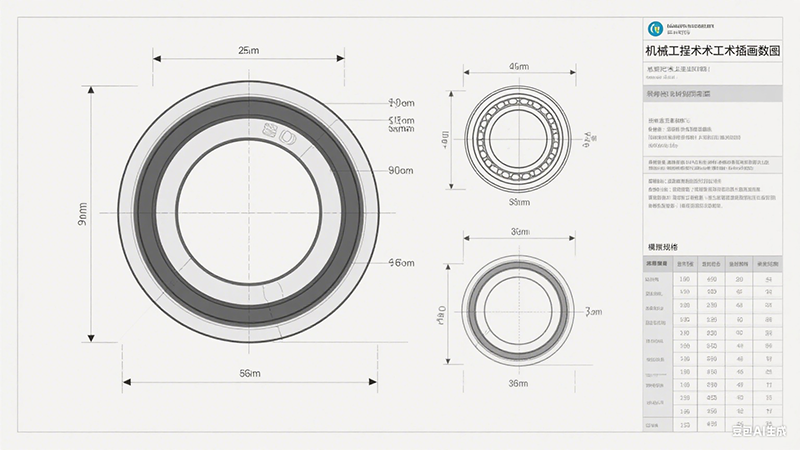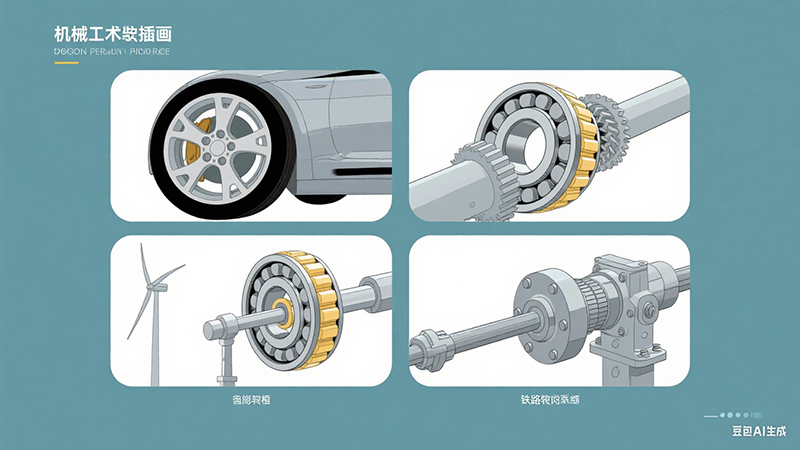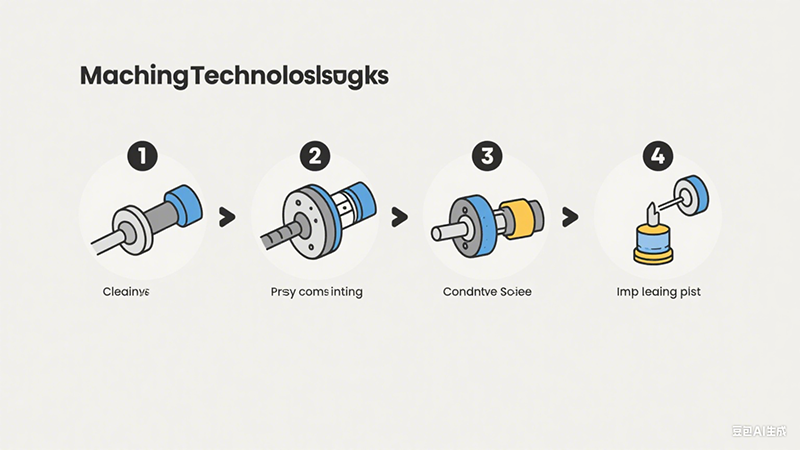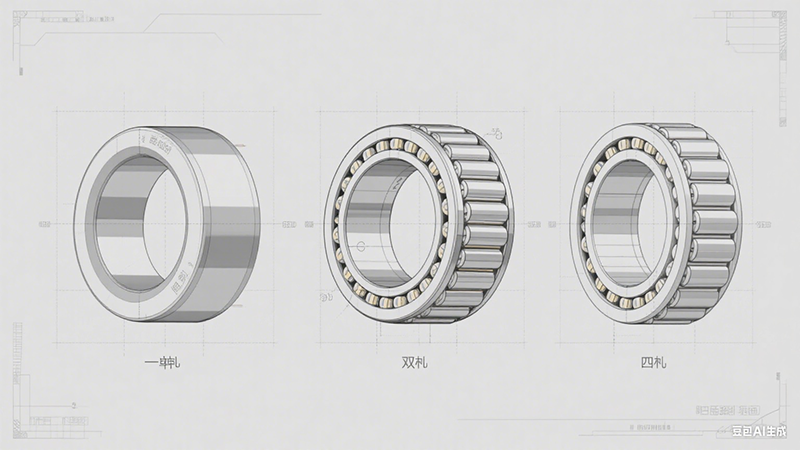Panduan Mendalam tentang Bantalan Rol Tirus: Jenis, Penggunaan, dan Perawatan
Bantalan rol tirus stand out as one of the most adaptable and extensively employed bearing varieties across industrial sectors. Whether you’re seeking clarity on the applications of tapered roller bearings or need details about double row tapered roller bearings, this article offers professional perspectives to assist you in making well-informed choices.
Tapered roller bearings are available in multiple configurations to cater to diverse application demands.
- Single row tapered roller bearings: These are the most prevalent type, capable of handling moderate radial loads and axial loads in a single direction.
- Double row tapered roller bearings: They boast enhanced load-bearing capacity and can manage thrust loads in both directions, making them a top choice for machine tool spindles and gearboxes.
- Four-row tapered roller bearings: Designed to deliver maximum load capacity, they are specifically suited for rolling mill applications where extremely high radial loads are encountered.
- Specialized variants: This category includes sealed and pre-lubricated bearings (engineered for maintenance-free operation) and case-hardened bearings (ideal for particularly harsh working environments).
Many manufacturers, such as Timken, offer both metric and inch series bearings to align with different global equipment standards. The selection of a specific
bearing type depends on factors like load direction, available installation space, speed requirements, and surrounding environmental conditions.
Tapered roller bearings feature a robust load-bearing design, enabling them to operate stably under heavy loads and impact loads. This characteristic makes them perfect for heavy-duty applications, including rolling mills, cranes, and mining equipment.
These
bearings possess strong self-aligning capabilities, allowing them to automatically adjust for axis deviations. This ensures that the bearing bears stress evenly, which in turn helps reduce wear and fatigue, ultimately extending the bearing’s service life.
Tapered roller bearings excel in scenarios that require the simultaneous handling of radial and thrust loads. Their
key applications include:
- Automotive wheel hubs: One of their most common uses, where they support both the vehicle’s weight and the forces generated during cornering.
- Heavy machinery: Construction equipment and agricultural implements rely on these bearings for their durability when subjected to shock loads.
- Industrial gearboxes: They are used to support rotating shafts while effectively controlling axial movement.
- Conveyor systems: Their ability to accommodate minor misalignments makes them suitable for applications where perfect shaft alignment is difficult to achieve.
- Railroad axle boxes: Specially designed tapered roller bearings are employed here to withstand enormous loads and persistent vibration.
- Wind turbines: Large-diameter tapered roller bearings are utilized in the yaw and pitch systems of wind turbines, where reliability is of utmost importance.

To ensure optimal performance and longevity, adhere to the following usage guidelines:
- Maintain a clean environment around the bearing to prevent dust and debris from entering.
- Avoid subjecting the bearing to strong impacts during use, as this can cause scars, indentations, cracks, or even fractures.
- Use appropriate specialized tools when installing or disassembling the bearing.
- Wear gloves during operation to prevent corrosion caused by hand sweat coming into contact with the bearing.
The load capacity of tapered roller bearings varies greatly depending on their size and design, but it generally surpasses that of
bantalan bola of the same size.
- A typical medium-sized single row tapered roller bearing can handle dynamic radial loads of up to 150 kN and axial loads of approximately 75 kN in one direction.
- Double row configurations can roughly double these load capacities.
- Four-row bearings used in rolling mills may support radial loads exceeding 1,000 kN.
Several factors influence the actual load capacity, including the
bearing’s material, heat treatment process, lubrication condition, and operating temperature. Manufacturers provide detailed load rating data in their product catalogs, with dynamic load ratings indicating the maximum load a bearing can withstand for one million revolutions before fatigue sets in.
Proper mounting and alignment are critical for achieving the published load ratings. Even a small misalignment—such as 0.001 inch per inch of bearing width—can reduce the load capacity by 20% or more.
Tapered roller bearings consist of four core components: an inner ring, an outer ring,
tapered rollers, and a cage. Typically, the inner and outer raceways and the
rollers bear the load, while the cage functions to separate and stabilize the rollers.
- Pre-installation preparation: Thoroughly clean all components, including the shaft and the bearing housing. Inspect the bearing surfaces for any damage or contamination before proceeding.
- Press-fit installation: For press-fit applications, use an arbor press and proper installation tools to apply force evenly to the race being pressed. Never apply force through the rollers, as this can cause damage.
- Heat-assisted installation: For large-sized bearings, heat-assisted installation may be necessary. However, the heating temperature should not exceed 250°F (121°C) to avoid altering the bearing’s metallurgical properties.
- Clearance/preload adjustment: After installation, adjust the bearing’s clearance or preload in accordance with the manufacturer’s specifications. This usually involves tightening the adjusting nut to a specified torque while rotating the bearing to ensure proper seating of components, then backing off the nut to achieve the correct clearance.
- Lubrication: Proper lubrication is essential. Fill the bearing housing with the recommended grease to approximately 30–50% of its volume. Avoid overpacking, as this can lead to overheating.
Always refer to the manufacturer’s official installation guide for specific procedures, as improper installation is responsible for nearly half of all premature bearing failures.
Choosing the
correct bearing size involves more than just matching the shaft diameter. Follow these steps for accurate selection:
- Determine load requirements: First, calculate the actual radial and axial loads the bearing will need to support, including any additional loads from shock or vibration.
- Consider space constraints: Some applications may have limited installation space, requiring a smaller bearing than the ideal size. In such cases, higher-precision components may be necessary.
- Account for speed requirements: Speed is a key factor in size selection, as larger bearings typically have lower maximum RPM limits.
- Use manufacturer size charts: Most manufacturers provide comprehensive size charts that include critical dimensions such as bore diameter, outside diameter, width, and cup angles.
- Replacement considerations: When replacing an existing bearing, always match the complete part number rather than just the dimensions. Subtle design differences can significantly impact performance.
- Consult experts for new designs: For new equipment designs, consult with bearing engineers. They can recommend the optimal bearing size based on your specific application parameters and expected service life.



